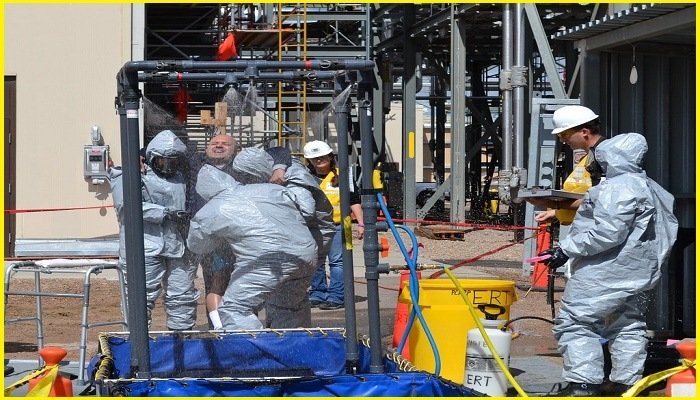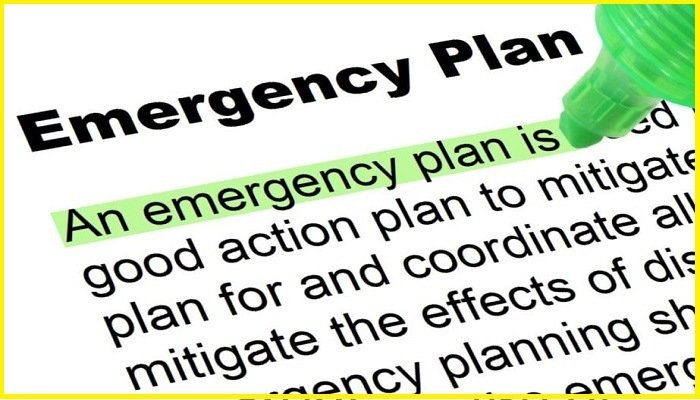Chemical Accidents Emergency Planning, Preparedness, and Response) Rules 1996:
The Central Government u/s. 6, 8 and 25 of the Environment (Protection Act), 1986 made these rules. They were notified and brought into force on 1-8-1996 They were amended in 1998.
They contain 13 rules and 8 schedules. Their abstract is as under:
Definitions (R. 2): They contain 12 definitions some of which are as under:
Industrial pocket means any industrial zone earmarked by the Industrial Development Corporation of the State Government or by the central Government.
Major Accident Hazards (MAH) Installation
Off-site emergency plan means the plan prepared as per Sch. 12 u/r 14(1) of the MSIHC Rules (similarly On-site emergency plan means that prepared as per Sch. 11 u/r 13(1) of the MSIHC Rules.)
Different Crisis Groups: The constitution of the Central, State, District, and Local Crisis Group shall be as specified in Sch. 5, 6, 7 & 8 respectively. The members of the Central, State and District Crisis Groups are empowered u/s 10(1) of the EP Act 1986 to enjoy those powers. The MAH installations shall aid, assist and facilitate the functioning of the District and Local Crisis Groups Meeting of the Central, State, District and Local Crisis Group shall be held at 6 months, 3 months, 45 days and 30 days respectively. Functions of the Central, State, District and Local Crisis Groups given in Rules 5, 7, 9 and 10 respectively are summarised in the following Table.

Functions of the Crisis Groups (Rules 5, 7, 9 & 10):
| 1. | Expert guidance. | Some as Functions No. 1 to 7 mentioned for Group |
| 2. | Monitoring of post-accident situation and remedial measures to prevent a recurrence. | 8. Assistance to the State Govt. in planning preparedness and mitigation of major accidents |
| 3. | Post-accident analysis and evaluation of response. | 9. Quarterly report to the CCG. |
| 4. | Review of District off-site emergency plans and reports received. | |
| 5. | Respond to queries. | |
| 6. | Statewise list of experts. | |
| 7. | Financial and other help. | |
| 8. | Information to the public. |
| 1. | Expert guidance. | 1. | Preparation of local emergency plan for the industrial pocket and dovetailing of this plan with the Dist. An off-site emergency plan. |
| 2. | Preparation od Dist. An off-site emergency plan. | 2. | Training of persons and the public. |
| 3. | Review of all on-site emergency plants of MAH units. | 3. | Half-yearly mock drill and report to DCG. |
| 4. | Management of chemical accidents in the district. | 4. | Respond to public inquiries. |
| 5. | Monitoring of every chemical accident. | 5. | Information to the public. |
| 6. | Continuous information to the CCG and SCG. | 6. | Assistance to MAH units for informing persons likely to be affected. |
| 7. | Report of a chemical accidents within 15 days to SCG. | ||
| 8. | Yearly mock drill and report to SCG. |
Information to the public: The Central, State and Local Crisis Group shall provide information on request regarding chemical accident prevention, preparedness and mitigation to the public in their respective jurisdiction. The Local Crisis Group shall assist the MAH installations in taking appropriate steps to inform persons likely to be affected by a chemical accident (R. 13).
Crisis Alert system: The Central Government shall set up functional control room information network with state and district control rooms, appoint staff and experts in control rooms publish lists of (i) MAH installations (ii) Major chemical accidents in chronological order (iii) Members of the Central, State and District Groups and take measures to create awareness amongst the public to prevent chemical accidents (R. 4).
Schedules:
Sch. 1 to 4 – The same as Sch. 1 to 4 of the MSIHC Rules 1989 or R 68J, GFR 1963.
Sch. 5 to 8 – List of members for CCG, SCG, DCC, and LCG respectively.





